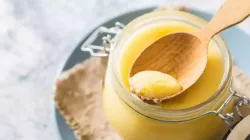Is your ghee pure? 5 simple home tests to verify the purity
Ensuring the purity of ghee is crucial for both health and culinary reasons. While these home tests can help you determine the quality of your ghee, it’s also important to purchase ghee from reputable brands or sources to minimise the risk of adulteration.

Ghee, a staple in many kitchens, is revered for its rich flavour, aroma, and numerous health benefits. However, with the rise of adulterated products in the market, ensuring the purity of your ghee has become increasingly important. Pure ghee is made from cow’s milk and is free from any additives or impurities. Here are five simple home tests you can try to verify the purity of your ghee.
The melt test
One of the easiest ways to check the purity of ghee is by observing its melting process. Place a spoonful of ghee in a small container and heat it on a stove or in a microwave. Pure ghee melts completely and turns into a clear, golden liquid without leaving any residue behind. If the ghee is adulterated, you may notice residue or separation, indicating the presence of other oils or fats.
The iodine test
This test helps detect the presence of starch in ghee. Mix a small amount of ghee with iodine solution (a few drops). If the mixture turns blue, it indicates the presence of starch, meaning the ghee may not be pure.
The water test
Take a teaspoon of ghee and melt it in a glass jar. Add an equal amount of water to the melted ghee and shake well. Allow it to sit for a few minutes. Pure ghee will not mix with water and will settle separately. If the ghee is adulterated, you may notice cloudiness or mixing, indicating the presence of impurities.
The refrigerator test
Place a small amount of ghee in the refrigerator for 30 minutes. Pure ghee will harden evenly and maintain a uniform texture. If the ghee is adulterated, it may form layers, indicating the presence of other oils or fats with different freezing points.
The aroma test
Ghee is known for its characteristic nutty aroma. To perform the aroma test, heat a small amount of ghee in a pan. Pure ghee will release a pleasant, rich, and nutty smell. If the ghee is adulterated, the aroma may be faint or different, often indicating the presence of other oils or artificial flavourings.